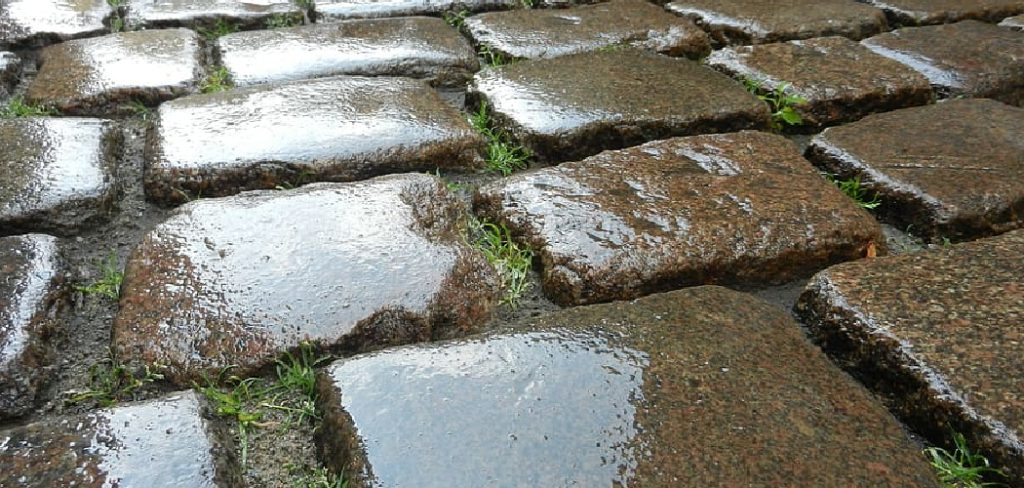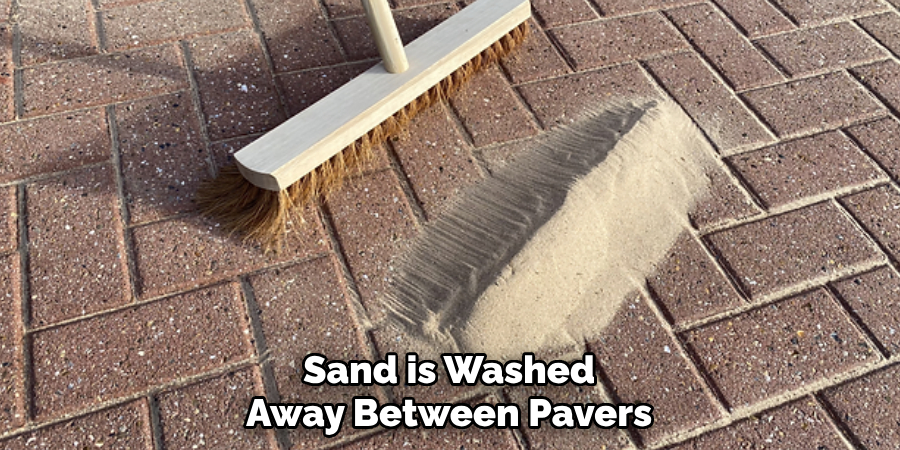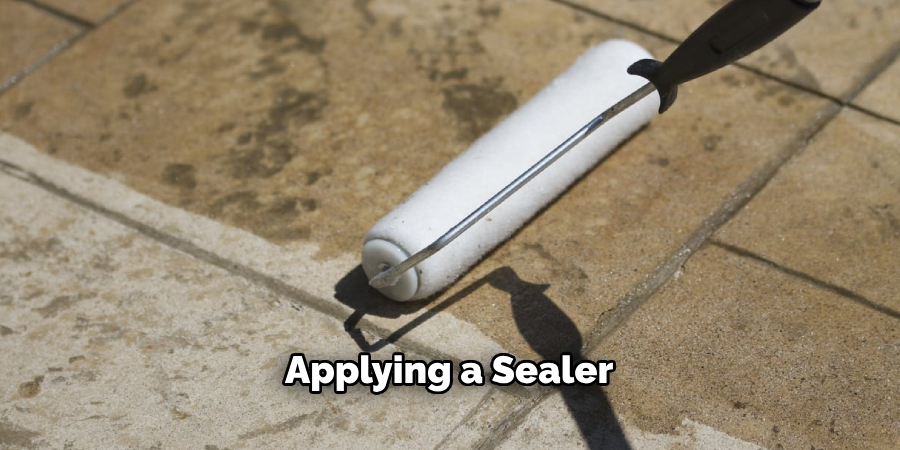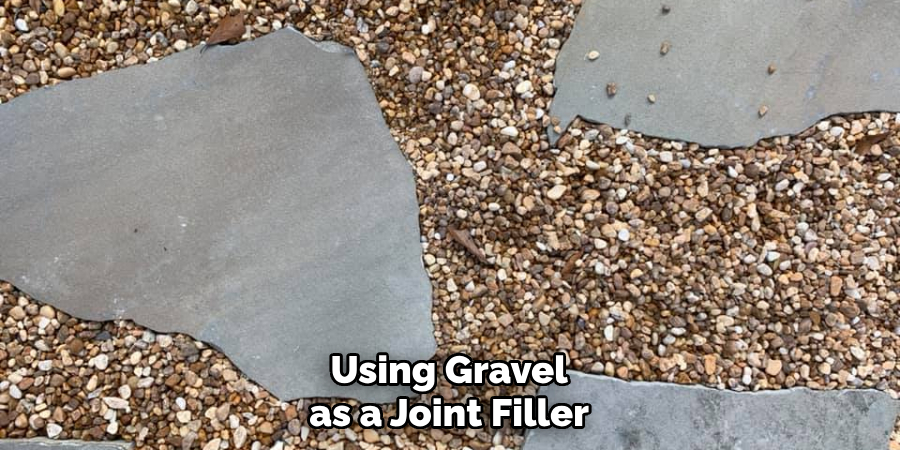Are you looking for a solution to the pesky problem of sand washing away at the joints between your pavers? You’re not alone. It’s an age-old challenge that many homeowners face when it comes to maintaining their walkways, patios, and other outdoor spaces with paver installations. Fortunately, preventing this kind of erosion is easier than you think – all it takes is some regular maintenance and being mindful about how you fill any gaps or cracks.

In this blog post, we’ll be exploring how to stop sand from washing away between pavers so that your yard remains aesthetically pleasing year-round.
Why is It Important to Stop Sand From Washing Away Between Pavers?
1 . To Prevent Damage to Your Pavers
When sand washes away between the pavers, it creates gaps and spaces that can cause the pavers to shift or sink. This can lead to uneven surfaces, tripping hazards, and damage over time. By preventing sand from washing away, you can preserve the stability and integrity of your paver installation.
2 . To Maintain the Aesthetic Appeal
Pavers are often chosen for their visual appeal and ability to enhance the overall look of a space. However, when sand gets washed away, it can make your paver installation look unsightly and unfinished. By stopping sand from washing away, you can maintain the beautiful appearance of your pavers.
3 . To Avoid Weed Growth
When sand is washed away between pavers, it creates an empty space that can easily be filled with weeds, grass, or other unwanted plants. This not only ruins the look of your paver installation but also makes it more challenging to clean and maintain. By preventing sand from washing away, you can keep these pesky weeds and plants at bay.

4 . To Save Time and Money on Maintenance
Replacing sand between the pavers can be a time-consuming and costly process. By stopping sand from washing away, you can save yourself the hassle of constantly having to replace it. This will also help you save money in the long run as you won’t have to spend on frequent maintenance.
5 . To Ensure Proper Drainage
Sand plays a vital role in the drainage system of pavers. When it is washed away, water may not be able to drain properly, leading to standing water and potential damage to your pavers. By preventing sand from washing away, you can ensure that your paver installation has proper drainage to prevent any potential issues.
12 Tips on How to Stop Sand From Washing Away Between Pavers
1 . Using Polymeric Sand
Polymeric sand is a type of joint sand that hardens when wet, creating a solid bond between pavers. This prevents water from washing away the sand between the pavers. It’s important to note that polymeric sand must be applied correctly for it to be effective in preventing erosion.
2 . Proper Paver Installation
The key to preventing sand from washing away between pavers is to properly install them in the first place. This includes ensuring a solid base, proper drainage, and compacting the pavers tightly together.
3 . Regular Maintenance
Regular maintenance is crucial in preventing erosion between pavers. Sweep or hose down your pavers regularly to remove any dirt or debris that may be causing water to pool and wash away the sand.
4 . Use a Sealer
Applying a sealer to your pavers can also help in preventing sand erosion. The sealer acts as a barrier between the pavers and water, reducing the amount of water that is able to seep through and wash away the sand.

5 . Adjust Sprinkler Systems
If you have sprinklers near your pavers, make sure they are not spraying directly onto them. This can cause excess water to pool and wash away the sand.
6 . Use a Sloping Technique
Another way to prevent erosion between pavers is by using a sloping technique during installation. This involves angling the pavers slightly downwards towards an area where excess water can drain off.
7 . Add Extra Sand
If you notice that the sand between your pavers is washing away, add more sand to fill in the gaps. Make sure to compact it tightly to prevent future erosion. Also, be sure to use the same type and color of sand for a cohesive look.
8 . Install Edge Restraints
Installing edge restraints can also help in preventing erosion between pavers. These are small barriers placed around the edges of your pavers to keep them in place and prevent water from washing away the sand.
9 . Consider Using Gravel
Instead of sand, you can opt for using gravel as a joint filler between your pavers. Gravel is more stable and less likely to wash away, making it a good alternative for areas with heavier rainfall. Also, be sure to use a geotextile fabric underneath the gravel to prevent weeds from growing through.

10 . Use Infill Materials
Infill materials such as mulch or crushed stone can also be used between pavers. These materials are heavier and less likely to wash away compared to sand. They also provide better drainage, reducing the risk of erosion.
11 . Address Drainage Issues
Poor drainage is one of the main causes of sand erosion between pavers. If you notice excess water pooling in certain areas, consider installing a drainage system to redirect the water away from your pavers.
12 . Regular Inspections
Regularly inspecting and maintaining your pavers can go a long way in preventing sand erosion. Keep an eye out for any signs of erosion and address them promptly to avoid further damage.
Overall, preventing sand from washing away between pavers requires proper installation, regular maintenance, and the use of the right materials. By following these tips, you can keep your pavers looking beautiful and prevent costly repairs in the future.
Frequently Asked Questions
What Precautions Can I Take To Prevent The Washing Away Of Sand Between Pavers?
- Make sure that the base layer of your paver installation is properly compacted and leveled. A well-compacted base will provide a strong foundation for your pavers, preventing them from shifting and allowing sand to wash away between them.
- Use polymeric sand instead of regular jointing sand. Polymeric sand contains additives that harden when exposed to water, creating a stronger bond between pavers and preventing the sand from washing away.
- Sweep additional sand into the joints after installation. This will help fill any gaps and provide extra support for your pavers.
- Consider using edge restraints or landscape adhesive around the perimeter of your paver installation. These will help keep your pavers in place and prevent them from shifting, which can lead to sand washing away.
- Regularly sweep or blow off your pavers to remove debris. This will not only keep your pavers looking clean, but it will also prevent any build-up of dirt or leaves that could potentially clog the joints and cause sand to wash away.

How Often Do I Need To Reapply Sand Between My Pavers?
The frequency of reapplying sand will depend on various factors such as weather conditions, foot traffic, and the type of sand used. As a general rule, it is recommended to check your paver joints every 3-5 years and top up any areas where the sand has washed away.
Can I Use Any Type Of Sand Between My Pavers?
It is best to use a specific type of sand designed for paver jointing, such as polymeric sand or regular jointing sand. Regular sandbox or beach sand may not provide the necessary strength and stability required for paver installations.
Are There Any Alternative Solutions To Prevent Sand From Washing Away Between Pavers?
Some alternative solutions to prevent sand from washing away between pavers include using paver sealers, which can help lock in the sand and prevent it from being washed away by rain or water.
Additionally, you can also use a mixture of cement and sand to fill in the joints for added strength and stability. However, these methods may require more maintenance and can be more costly compared to using polymeric or regular jointing sand.
Can I Still Use My Pavers If The Sand Washes Away?
Even if the sand between your pavers washes away, you can still use them. However, it is important to regularly check and refill any gaps in the joints to prevent further shifting or damage to your paver installation. Neglecting to do so could lead to uneven surfaces and potential safety hazards. It is best to address any sand loss as soon as you notice it to maintain the longevity and stability of your pavers.
Overall, taking the necessary precautions and regularly maintaining your paver installation can help prevent sand from washing away between pavers and ensure their long-lasting durability.
Conclusion
In conclusion, making sure sand between pavers lasts takes some dedication. After implementing the correct steps, properly placing and adjusting the sand, and instituting a regular maintenance regimen to keep it in place, you’ll be able to enjoy your durable outdoor patio or structure for many years.
Now you know how to stop sand from washing away between pavers! Remember, when it comes to preserving the integrity of your paver design, proper sand placement and care are key.
Take to time to research, plan ahead, and invest in quality items for a long-lasting project that will enhance your outdoor living space and add beauty and function for years of enjoyment. We challenge all of you to make every effort to combat sand erosion so your surface stays intact!
